How Do Braces Work?
Braces are designed to place mild, continual pressure onto teeth. The pressure gradually shifts teeth and tooth roots into the correct positions, pushing or pulling them into the right locations. The exact process can depend on the type of brace our orthodontist recommends.
What Are Braces?
Braces are orthodontic appliances fitted onto teeth, so generally, they are fixed in place for the duration of treatment.
Various types of braces can be fixed onto the outer or inner surfaces of your teeth. They are also made from different materials.
The exception is palate expanders and clear aligners, which are removable braces.

Metal Braces
Traditional metal braces have stainless steel brackets, wires, and bands that work together to shift your teeth over several months.
Brackets are bonded onto each tooth by our dentist. These are attached to an archwire, a thin, flexible wire connecting the brackets. Small elastic bands called ligatures help ensure the wire remains firmly in place and under constant pressure so teeth will move correctly.
Ceramic Braces
Ceramic braces are sometimes called clear braces and work exactly the same as metal braces. The difference is that the brackets can be tooth-colored or made from a clear ceramic material. The wires and elastics can also be tooth-colored, making them less noticeable. However, you will still see these braces in your mouth.
Self-Ligating Braces
Self-litigating braces still have brackets and wires but don’t need elastic bands. The brackets are designed to be self-ligating, ensuring the archwires are held firmly in place and under the proper tension.
Lingual Braces
These braces are on the back of teeth. Instead of the brackets being glued onto the outer surfaces of teeth where they are highly visible, the braces are behind your teeth. Lingual braces are a good choice if you want more discreet fixed braces, but they are only suitable in certain circumstances.
Clear Aligners
Clear aligners are sometimes called invisible braces because the system uses clear plastic aligners or mouth trays to straighten teeth gradually. Unlike other braces, the aligners are removable, and you switch out each set after wearing them for approximately two weeks. Just like fixed braces, they must be worn almost continuously despite being removable.
If you wish to have clear aligners like Invisalign, compliance is vital. You must commit to wearing them regularly, ideally for at least 20-22 hours each day, and only removing them for eating, drinking, brushing, and flossing your teeth.
“ I have been going to Dr. Marianna Weiner for the past 13 years and I could not be happier with my smile and dental care! My teeth have been straight and perfectly maintained since I got my braces off at 14 years old. Her staff is always exceptionally warm, courteous, and accommodating. Dr. Weiner is very professional and has always shown the absolute best care when it comes to orthodontics, regular cleanings, filling cavities, etc. Highly recommend her if you’re looking for a new dentist/orthodontist!“

Maria Vennikov Invisalign Patient
What Are the Benefits of Having Braces?
There are some significant benefits to having orthodontic treatment. Most people choose to straighten their teeth because they want a more attractive smile, but other beneficial side-effects can include:
- Teeth that are easier to keep clean.
- Reduced risk of cavities and gum disease.
- Treating temporomandibular joint disorders (TMJ).
- Restoring full function so you can chew properly and speak clearly.
- Improving your facial profile by creating a fuller smile.
What to Expect While Wearing Braces?
Everyone has a slightly different experience while wearing braces; most people find treatment smooth and uneventful. However, some side effects are inevitable, and with fixed braces, you need to change your dietary habits and spend a little longer on your daily oral care routine. Once your braces are removed, wearing orthodontic retainers is essential to keep your teeth in straight.
Potential Side-Effects of Having Braces
Any dental treatment can produce some mild side effects, and orthodontics is no exception. During treatment, you may experience some of the following side effects.
- Temporary discomfort after your braces are first fitted and whenever they are tightened.
- Mild irritation if the braces rub on your tongue, lips, or cheeks.
- Jaw pain.
- Difficulty eating, particularly after your braces are adjusted.
These side effects should only be temporary and easily manageable with over-the-counter pain relief. Dental wax can also help deal with any irritation. You place it over any brackets or wires that are irritating the inside of your mouth. But if you experience severe or persistent pain, consult our emergency orthodontist in Brooklyn for professional care.
Caring for Braces
It’s essential to maintain good oral hygiene during orthodontic treatment, especially with fixed braces. Plaque and tartar can easily build up around your brackets and wires, increasing your risk of developing cavities and gum disease.
When you have fixed braces, Brooklyn Invisalign Center will provide a detailed list of instructions on how to look after them, and our hygienist can show you how to clean around the braces thoroughly. There are special tools to use that can make this process much easier.
How to Find a Dentist Offering Braces Near Me
Looking into braces for yourself or your child and not sure where to start? Finding the right provider nearby can make the whole process feel a lot less overwhelming.
Here’s how to begin your search for dental braces nearby:
- Search smart. Google phrases like “braces near me” or “teeth braces near me” and look through real reviews and before-and-after photos, not just the first listings.
- Ask people you trust. Your general dentist, a friend, or even a coworker might already know a solid local orthodontist worth checking out.
- On a budget? Try searching “affordable braces near me.” You’ll find providers with payment plans, flexible pricing, or insurance-friendly options.
- Use review sites. Zocdoc, Healthgrades, and Yelp are great for comparing availability, services, and hearing from people with similar needs.
- Call a few offices. You’ll get a quick sense of how helpful and responsive the staff are, and whether they’re a good fit for your situation.
Patient Experience
Oral Hygiene With Braces
Below are some general guidelines on how to care for your teeth while wearing braces.
- Brush your teeth at least twice daily with a soft-bristled toothbrush and fluoride toothpaste. Ideally, brush your teeth after meals as well.
- Floss your teeth at least once daily using techniques and tools we can show you. Alternatively, invest in a WaterPik with special attachments designed to clean around braces thoroughly.
- If you have clear aligners like Invisalign, clean them at least once daily. Rinse them after removing them for meals. Whenever you remove them, store them properly so you don’t mislay them.
- If you use mouthwash, choose an alcohol-free antibacterial brand, preferably one that contains fluoride. Ask us for advice on which brand to try.
- Visit our dental practice regularly for hygiene appointments and other routine dental care. We may advise more frequent hygiene appointments during orthodontic treatment so our hygienist can remove plaque and tartar buildup professionally.
- Visit us regularly so we can assess the progress of your orthodontic treatment, tighten fixed braces as necessary, and adjust your treatment plan if required.
Dietary Considerations
After you have fitted braces, you may feel slight discomfort or soreness. Therefore, plan to stick to softer foods for the first few days until the discomfort is reduced. Good choices include:
- Scrambled eggs.
- Pasta.
- Cooked vegetables.
- Soup.
- Oatmeal.
- Yogurt.
- Soft fruits like berries and stone fruits.
While wearing fixed braces, it’s important to avoid certain foods. These include nuts, seeds, hard fruits and vegetables, and anything sticky like caramel. Hard foods can damage your brace brackets and wires, while sticky foods are tricky to remove thoroughly.
If you have removable braces like Invisalign aligners, you don’t need to follow a different diet during treatment as you remove the aligners for mealtimes.
Learning More about Braces
Many different types of braces are available and can address a wide range of problems. Most people are looking for a discreet solution, and we can achieve this with fixed braces. Although removable aligner systems like Invisalign provide excellent results, there are times when fixed braces are a preferable solution.
When you see our orthodontist for a consultation, we can determine the issues requiring correction and discuss possible options to provide the best treatment outcome. Brooklyn Invisalign Center team is here to help you achieve the smile you’ve dreamed of.

